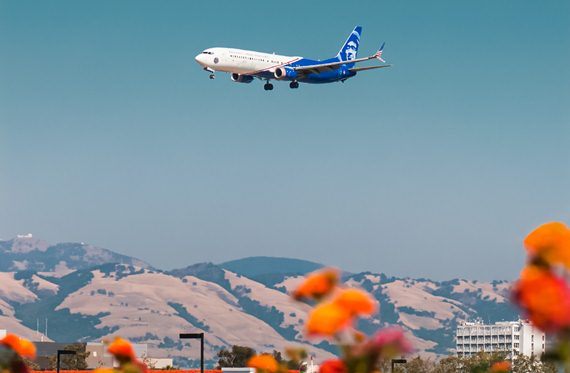-
Compared to pre-pandemic November 2019, global demand in November 2021 was up 3.7% while international operations were 4.2% higher
-
This was, however, significantly lower than the 8.2% global demand growth and 9.2% growth for international operations seen in October 2021
-
Labor shortages, insufficient storage space at some airports, and processing backlogs are slowing growth despite favorable conditions
-
Asia-Pacific airlines saw their international air cargo volumes increase 5.2% in November 2021 compared to November 2019
Global air cargo markets showed slower growth in November 2021 as supply chain disruptions and capacity constraints impacted demand despite favorable economic conditions for the sector, according to the International Air Transport Association (IATA).
Compared to pre-pandemic November 2019, global demand in November 2021 was up 3.7% while international operations were 4.2% higher.
This was, however, significantly lower than the 8.2% global demand growth and 9.2% growth for international operations seen in October 2021 and in previous months.
Global capacity in November last year was 7.6% below November 2019, relatively unchanged from October 2021. Capacity remains constrained with bottlenecks at key hubs.
Economic conditions continue to support air cargo growth, but supply chain disruptions are slowing growth, said IATA.
These disruptions include labor shortages that are partly due to employees being in quarantine, insufficient storage space at some airports, and processing backlogs exacerbated by the year-end rush.
IATA noted that several key airports, including John F. Kennedy International Airport and Los Angeles International Airport in the US and Amsterdam Schiphol Airport reported congestion.
The November global Supplier Delivery Time Purchasing Managers Index (PMI) was at 36.4, which in current conditions points to delivery times lengthening because of supply bottlenecks.
Meanwhile, positive conditions continue to buoy air cargo, including strong retail sales in the US and China. In the US, retail sales were 23.5% above November 2019 levels. And in China online sales for Singles’ Day were 60.8% above their 2019 levels.
Moreover, global goods trade rose 4.6% in October (latest month of data) compared to pre-crisis levels, the best rate of growth since June. Global industrial production was up 2.9% over the same period.
The inventory-to-sales ratio remains low. This is positive for air cargo as manufacturers turn to air cargo to rapidly meet demand.
The recent surge in COVID-19 cases in many advanced economies has created strong demand for PPE shipments, which are usually carried by air.
“Air cargo growth was halved in November compared to October because of supply chain disruptions. All economic indicators pointed towards continued strong demand, but the pressures of labor shortages and constraints across the logistics system unexpectedly resulted in lost growth opportunities,” said Willie Walsh, IATA’s director general.
“Manufacturers, for example, were unable to get vital goods to where they were needed, including PPE. Governments must act quickly to relieve pressure on global supply chains before it permanently dents the shape of the economic recovery from COVID-19,” he added.
By region, Asia-Pacific airlines saw their international air cargo volumes increase 5.2% in November 2021 compared to 2019. This was only slightly below the previous month’s 5.9% expansion.
North American carriers posted an 11.4% increase in international cargo volumes in November 2021 compared to November 2019. This was significantly below October’s performance (20.3%). Supply chain congestion at several key US cargo hubs has affected growth.
European carriers saw a 0.3% increase in international cargo volumes in November 2021 compared to the same month in 2019, but this was a significant drop in performance compared to October 2021 (7.1%). European carriers have been affected by supply chain congestion and localized capacity constraints.
Middle Eastern carriers experienced a 3.4% increase in international cargo volumes in November 2021, a significant drop in performance compared to the previous month (9.7%). This was due to a deterioration in traffic on several key routes such as Middle East-Asia, and Middle East-North America.
Latin American carriers reported a decline of 13.6% in international cargo volumes in November compared to the 2019 period. This was the weakest performance of all regions and a significant deterioration from the previous month’s performance (-5.6%).
African airlines saw international cargo volumes increase by 0.8% in November, a significant deterioration from the previous month (9.8%).





